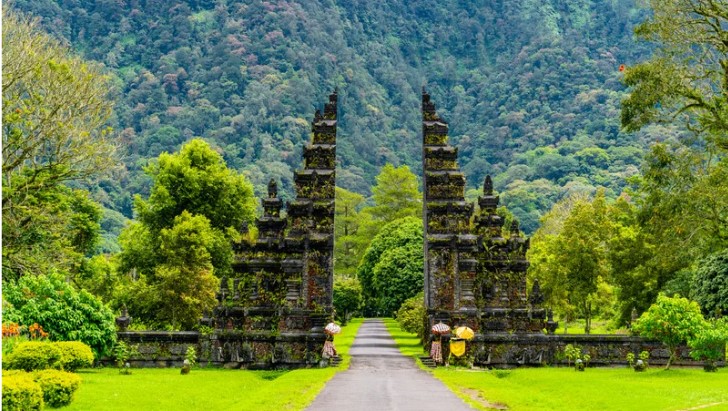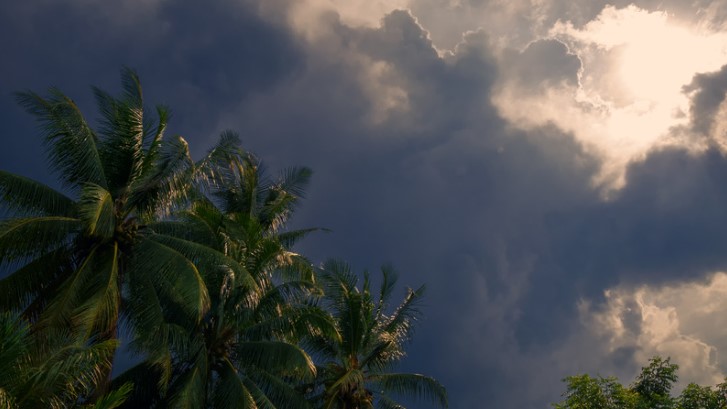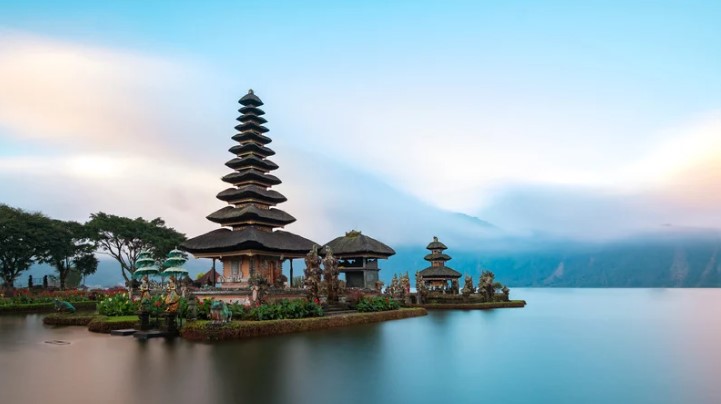The Ultimate Guide to Planning Your Bali Adventure: Timing, Budget, and Activities
Bali: A Top Travel Destination

Bali is an island known as the ‘Island of Gods’ and is highly regarded as one of the most beautiful islands in the world. It is a popular travel destination for tourists globally due to its picturesque beaches, cultural richness, lush rice paddies, active volcanoes, and lively nightlife. Everyone may find something to enjoy in Bali, whether seeking a calm beach vacation, an exciting adventure, or both.
The Importance of Timing When Planning a Trip to Bali
The best time to travel to Bali mostly depends on what you are looking for in your holiday. Bali is a year-round destination, but the timing of your visit can greatly affect your experience.
The island experiences distinct dry and wet seasons with its characteristics and attractions. Knowing the average temperature, chance of rain, and the busiest and cheapest times to visit can help you plan an amazing trip that suits your preferences and budget.
Understanding Bali’s Climate
Bali has a tropical climate, which means it experiences two distinct seasons: dry and rainy.
Tropical Climate: Wet and Dry Seasons
The dry season, which begins from May to October, is characterized by drier weather, less humidity, and colder temperatures. This is the busiest travel season because of the ideal weather for outdoor pursuits like hiking, scuba diving, and discovering the breathtaking beaches.
The wet season, often known as the rainy season because it lasts from November to April, is typified by greater humidity levels, sporadic afternoon showers, and a higher likelihood of precipitation. Despite the rain, this season has its charm as the landscape turns lush green, and there is a decrease in tourist crowds.
Average Temperature and Rainfall Throughout the Year
Over a year, the average temperature in Bali varies from 25°C (77°F) to 30°C (86°F). Generally, April experiences the warmest average temperature of 30°C (86°F), whereas July records the coolest average temperature of 25°C (77°F). The yearly rainfall also significantly differs between the dry and wet seasons. August is usually the month with the least rainfall, averaging about 40mm, while January typically receives the most rain, averaging 300mm.
By understanding the climate of Bali and the characteristics of each season, you can choose the best time to travel to Bali that suits your preferences and make the most of your trip.
The Dry Season (May to October)
Advantages:
Sunny Days and Clear Skies
The greatest time to visit Bali for beach sports, surfing, and diving is during the dry season because of the sunny days and clear sky that characterize it. The weather conditions during this period are ideal for water activities and exploring the beautiful beaches of Bali.
Vibrant Nightlife and Outdoor Events
This season is also when Bali comes alive with a vibrant nightlife and various outdoor events and festivals. Something always happens during the dry season, from beach parties to cultural events.
Drawbacks:
Peak Tourist Season: Crowded Spots and Higher Prices
Since the dry season is the most popular time for tourists, it is also the busiest time of the year. This means crowded spots and higher accommodation, activities, and food prices. It is also the peak tourism season, so it is advisable to book everything in advance.
Potential Water Shortages in Certain Areas
The dry season also brings the potential for water shortages in certain areas. It is always advisable to use water wisely during this time.
The Wet Season (November to April)
Advantages:
Lush Landscapes and Waterfalls at Their Prime
The wet season is when the landscape of Bali turns lush and green, and the waterfalls are at their prime. The wet season is the perfect time for nature lovers and photographers to capture the island’s beauty.
Fewer Tourists Leading to a More Serene Experience
Since the wet season is the least popular with visitors, fewer people will be around, and it will be a more relaxing experience. This is also the cheapest time to visit Bali, with lower accommodation and activity prices.
Drawbacks:
Frequent Rain Showers, Which Might Disrupt Outdoor Activities
The frequent rain showers that characterize the wet season could scuttle outdoor activity. Plan your activities to coincide when it typically rains in the afternoon and evening.
Higher Humidity Levels
It could be uncomfortable for certain people during the wet season because of the higher humidity levels.
Potential for Flooding in Certain Areas
During the rainy season, there is also a chance of flooding in some locations, so it is wise to check the weather forecast and take the appropriate safety precautions.
In conclusion, the best time to travel to Bali depends on what you are looking for in your holiday. The dry season is best if you prefer sunny days, vibrant nightlife, and outdoor activities. On the other hand, if you prefer lush landscapes, fewer crowds, and lower prices, the wet season might be a better option. Ultimately, Bali is a beautiful island that can be enjoyed year-round, so choose the time that suits you the best.
Cultural and Festive Considerations
When planning your trip to Bali, it’s important to consider the local festivals and ceremonies, as they are a significant part of Balinese culture and can affect your travel plans.
Nyepi (Balinese Day of Silence): A Unique Experience but with Restrictions
Nyepi, or the Balinese Day of Silence, is one of the most important and unique ceremonies in Bali. It is a day of silence, fasting, and meditation observed by the Balinese Hindu community. On this day, the island comes to a standstill, with no outdoor activities, no transport, and even the airport is closed. While it is a unique experience to witness the island in such a serene state, it also comes with restrictions, as you are not allowed to leave your accommodation and must keep noise and lights to a minimum.
Bali Arts Festival: A Showcase of Balinese Culture
The Bali Arts Festival is a month-long festival in June and July that showcases Bali’s rich culture and arts. It includes performances of traditional Balinese dance, music, drama, and exhibitions of Balinese art forms. It is an excellent opportunity to immerse yourself in the local culture and witness the artistic talents of the Balinese people.
Other Local Festivals and Ceremonies: Opportunities to Immerse in the Local Culture
Apart from Nyepi and the Bali Arts Festival, numerous other local festivals and ceremonies are held annually. These events provide excellent opportunities to immerse yourself in the local culture and learn about the customs and traditions of the Balinese people. However, it is important to be respectful and follow the local customs and etiquette when attending these events.
Budgetary Considerations
Comparing Costs in Peak vs. Off-Peak Seasons
The cost of traveling to Bali can vary significantly between the peak and off-peak seasons. During the peak tourist season, the prices for accommodation, activities, and food are generally higher due to the increased demand. On the other hand, during the off-peak season, there are fewer tourists and prices for accommodation and activities are usually lower. It is advisable to compare the costs and consider your budget before planning your trip.
Tips for Getting the Best Deals Regardless of the Season
- Book in Advance: Booking your accommodation, activities, and transportation in advance can help you secure the best deals and avoid last-minute price hikes.
- Compare Prices: Compare prices of accommodation, activities, and transportation from different providers to get the best deal.
- Travel Insurance: Don’t forget to get travel insurance to protect yourself from unforeseen events. It is advisable to get travel insurance that covers medical expenses, trip cancellations, and lost belongings.
- Eat Like a Local: Eating at local warungs (small family-owned restaurants) instead of touristy restaurants can help you save money and taste authentic Balinese cuisine.
- Use Public Transportation: Using public transportation instead of private transportation can help you save money. However, public transportation in Bali is not as developed as in other countries, so it might not be the most convenient option.
In conclusion, considering the cultural and festive events and your budget is crucial when planning your trip to Bali. By understanding the local customs and traditions, comparing costs, and getting the best deals, you can have an enriching and affordable experience on the beautiful island of Bali.
Other Factors to Consider
Marine Life Visibility for Divers
One of the key attractions of Bali is its rich marine life. For divers, the best time to travel to Bali is during the dry season, from May to October, when the water is clear and visibility is at its best. During the wet season, the increased rainfall can lead to reduced visibility underwater. However, it’s worth noting that marine life is abundant year-round, so even during the wet season, you can still have an amazing diving experience.
Surfing Conditions
Bali is a popular destination for surfers from around the world. The surfing conditions vary throughout the year, with different coasts being ideal at different times. The west coast of Bali, including spots like Kuta and Seminyak, has the best waves during the dry season, while the east coast, including spots like Nusa Dua and Sanur, is better during the wet season. If surfing is a priority for your trip, it’s important to plan accordingly.
Availability of Certain Fruits and Local Produce
Bali is home to a wide variety of delicious fruits and local produce. The availability of certain fruits, however, varies with the seasons. For example, mangosteen and rambutan are available during the wet season, while durian and salak (snake fruit) are more abundant during the dry season. If there are specific fruits or local produce you want to try, it’s worth considering the season in which they are most abundant.
Tips for a Memorable Bali Experience Regardless of the Season
Respecting Local Customs and Traditions
Bali has a rich culture and traditions deeply ingrained in people’s daily lives. It’s important to be respectful of local customs and traditions. For example, wearing a sarong when visiting temples is customary, and it’s considered impolite to point your feet at people or sacred objects.
Being Prepared for Sudden Weather Changes
The weather in Bali can be unpredictable, with sudden rain showers even during the dry season. It’s always a good idea to carry a light rain jacket or umbrella and have a backup indoor activity plan.
Embracing Both the Popular and Off-the-Beaten-Path Experiences
Bali has much to offer, from popular tourist spots to off-the-beaten-path experiences. While visiting popular spots like the Monkey Forest and the terraces is great, it rings lesser-known areas and activities. For example, consider visiting the less crowded beaches in the north or participating in a traditional Balinese cooking class.
In conclusion, there are several factors to consider when planning your trip to Bali, including the marine life visibility for divers, surfing conditions, and availability of certain fruits and local produce. Regardless of the season, by respecting local customs and traditions, being prepared for sudden weather changes, and embracing both popular and off-the-beaten-path experiences, you can have a memorable and enriching experience in Bali.
Conclusion
Bali, the Island of Gods, is an ideal destination for travelers seeking a tropical paradise. Whether you are a beach enthusiast, a culture lover, or an adventure seeker, Bali has something to offer for everyone. The best time to travel to Bali depends on what you value: weather, budget, cultural experiences, or fewer crowds.
Suppose you prefer sunny days, clear skies, and outdoor activities like diving, surfing, or exploring beautiful beaches. In that case, the dry season from May to October is perfect for you. However, remember that this is the peak tourism season so popular spots may be crowded, and prices for accommodation and activities may be higher.
On the other hand, if you prefer a more serene experience, lush landscapes, and waterfalls at their prime and are looking for lower accommodation and activity prices, the wet season from November to April may be more suitable for you. However, be prepared for frequent rain showers and higher humidity levels.
Cultural enthusiasts will find value in visiting Bali during local festivals and ceremonies, such as the Nyepi or the Bali Arts Festival, as they provide an excellent opportunity to immerse in the local culture. However, being respectful and following local customs and etiquette is essential.
In summary, there is no one-size-fits-all ‘best time to travel to Bali.’ It ultimately depends on your preferences and what you value most in your travel experience. Considering the various factors discussed in this article, you can plan a memorable and enriching trip to this beautiful island, regardless of the season.
Thank you for considering the many facets of traveling to Bali. We hope this guide helps you plan your amazing trip to this beautiful island. Selamat Jalan! (Safe travels!)










Pingback: Turks and Caicos All Inclusive: La Paz's Luxe Retreats